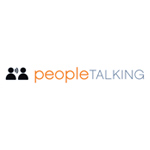 Long acknowledged by psychologists and other experts, society is running up a huge ‘attention deficit’. Much of this deficit is fueled by the tempting access to quick communication tools and our deeply rooted egos, which further hinder our ability to focus on the other person and communicate with them effectively. We all want to weigh in with our opinions based on all that we read and see online, and seek a voice amid the noise to make our views known – surrounded in comfort and perhaps anonymity.
Long acknowledged by psychologists and other experts, society is running up a huge ‘attention deficit’. Much of this deficit is fueled by the tempting access to quick communication tools and our deeply rooted egos, which further hinder our ability to focus on the other person and communicate with them effectively. We all want to weigh in with our opinions based on all that we read and see online, and seek a voice amid the noise to make our views known – surrounded in comfort and perhaps anonymity.
We are in touch with more people than ever before but our conversations have become more clipped. Over time, a text or email thread has become the digital age version of a 19th century exchange of letters via ship across the waters. We have to adapt to the times, however, the issue is that there is an overload of communication. According to Yankelvich Research, we receive 3,000 to 20,000 visual impressions daily. Introduce personal communications devices into the mix, and people are continuously distracted. On average, millennials use their smartphones 43 times per day. Consider all of the other channels and it is easy to see how it all adds up.
The New Code of the English Language
When engaging one another in cyberspace, many people communicate not in sentences, but by using a code involving a world of acronyms and emojis (which have evolved far beyond the smiley faces that simultaneously irritate and cheer us up). This shorthand is the product of instantaneous information sharing and feeds our need for quick, clipped exchanges.
As a result, face-to-face conversation has become increasingly difficult and awkward as we interrupt each other, forget to listen as we wait for a break in the conversation to jump in, multi-task by checking our cell phones, or look around the room while talking with another person. This often results in a sort of truncated verbal short-hand because we expect our verbal conversations to match those we have via technology.
We therefore run the risk of losing much of our learning capabilities, let alone social skills that let us build trust and deep relationships.
How Can We Thrive in the Workplace?
As if our egos and personal interests weren’t enough, consider the double whammy that results when we are overloaded with information in the workplace – and too much work to do. Collaboration and relationship building are often the first things to go.
A recent study by the Harvard Business Review showed that successful organizational collaboration was the result of many skills, including appreciating others, being able to engage in purposeful conversations, and productively and creatively resolving conflicts.
How will we and the next generation fare business and career-wise if interpersonal interaction ceases to become second-nature and becomes an ordeal?
Here are six tips to help ensure we communicate with maximum efficiency and authenticity to build trust.
- When seeking to collaborate with others, weigh the choice of communications vehicle carefully. Consider whether you are really getting through to a person when you email, phone, text, write to, or speak with them. Are you engaging them or just ticking the boxes in passing along information? If you are just sending information, you would be wise to revisit your communication choices to make yourself and your message more memorable while expanding your influence. (Advocis Forum)
- Give your conversational partner(s) your full attention while maintaining eye contact. You don’t need to stare, but remain focused on them and their message. Eye contact is a powerful tool that allows a non-verbal connection. If you are constantly looking around the room or anywhere but at your conversational partner, it appears as though you aren’t interested in what they have to say.
- Be aware of their body language and sit or stand in a way that reflects their stance. This is called mirroring and can create trust among people who may have just met and don’t know one another well. Careful not to shadow their every move, turning your conversation into a comedy sketch, but if your conversational partner is resting casually in their chair, there is no need for you to sit bolt upright at attention, for example. On the flip side, if your conversational partner appears uncomfortable, perhaps it’s time to close the conversation or change the topic.
- Listen intently and avoid the temptation to finish their sentences or dive in at the earliest moment with your opinions or a new topic. Constantly ask yourself whether you are listening or waiting to speak. Interruptions halt the ebb and flow of a conversation, which makes it hard for meaningful dialogue to develop.
- Learn to overcome your nerves so you have an easier time connecting with people. When we are nervous, we can ramble and/or become almost inaudible. Speak slowly and purposefully. Anchor yourself by keeping your feet flat on the floor and avoid rocking or fidgeting with your clothing or hair. Taking stock of your own nervous habits allows you to adapt the way you interact with others.
- Remember to turn off your cell phone before the conversation begins. While there are many visual distractions that can hinder a conversation, cell phones have become a habitual extension of our daily lives. Many times we don’t even know we are checking our phone because it’s subconscious. You need to treat each conversation as the most important thing at the moment. That means, avoiding cell phone distraction. That text or email will still be there when you have finished what you are currently doing.
For more on the attention deficit age and how it is affecting our communication, download a FREE COPY of my latest eBook Communication in Crisis: Have We Lost Our Ability to Build Trust.
This article was originally posted on LinkedIn.
